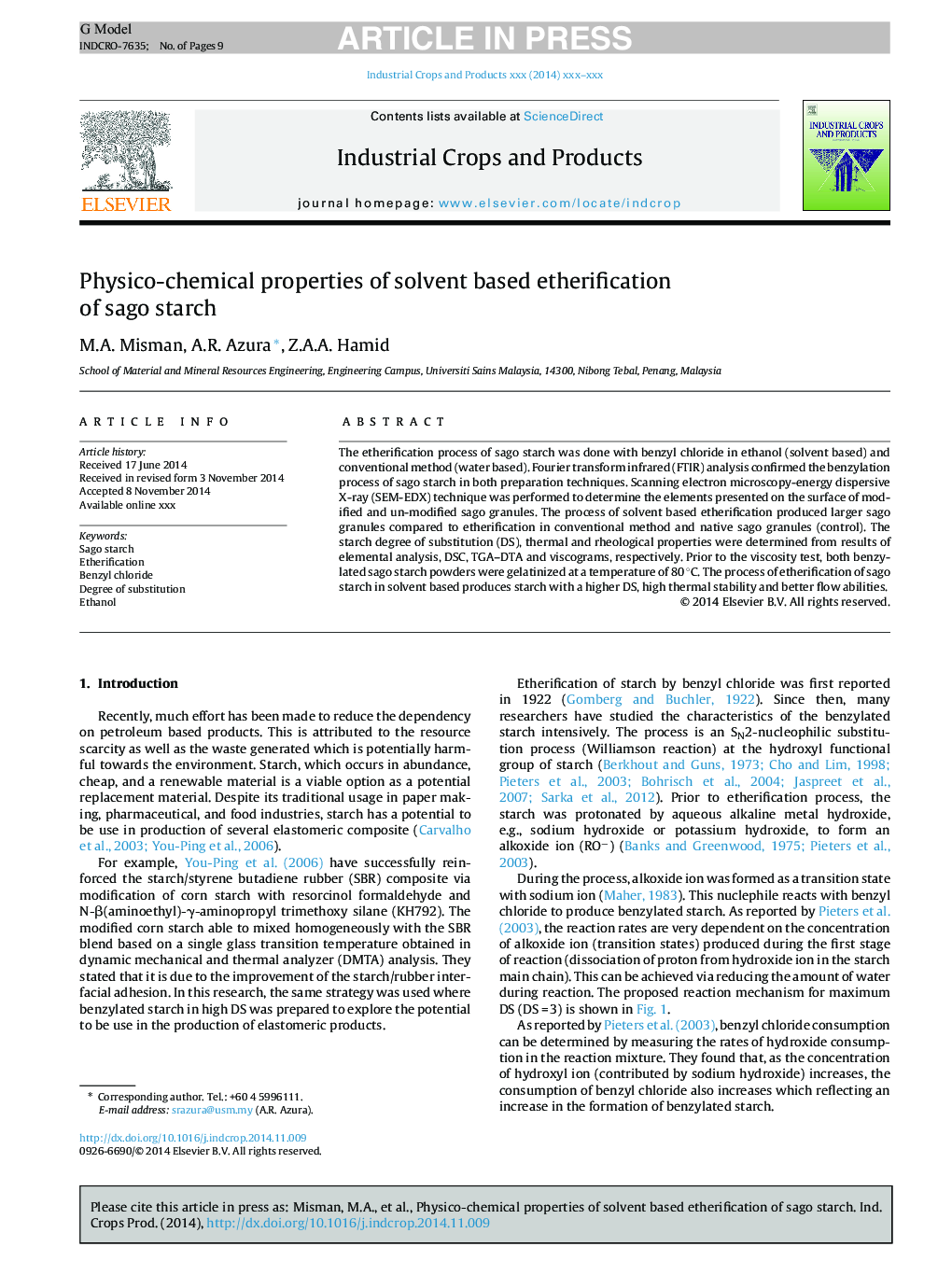| Article ID | Journal | Published Year | Pages | File Type |
|---|---|---|---|---|
| 6376235 | Industrial Crops and Products | 2015 | 9 Pages |
Abstract
The etherification process of sago starch was done with benzyl chloride in ethanol (solvent based) and conventional method (water based). Fourier transform infrared (FTIR) analysis confirmed the benzylation process of sago starch in both preparation techniques. Scanning electron microscopy-energy dispersive X-ray (SEM-EDX) technique was performed to determine the elements presented on the surface of modified and un-modified sago granules. The process of solvent based etherification produced larger sago granules compared to etherification in conventional method and native sago granules (control). The starch degree of substitution (DS), thermal and rheological properties were determined from results of elemental analysis, DSC, TGA-DTA and viscograms, respectively. Prior to the viscosity test, both benzylated sago starch powders were gelatinized at a temperature of 80 °C. The process of etherification of sago starch in solvent based produces starch with a higher DS, high thermal stability and better flow abilities.
Related Topics
Life Sciences
Agricultural and Biological Sciences
Agronomy and Crop Science
Authors
M.A. Misman, A.R. Azura, Z.A.A. Hamid,
